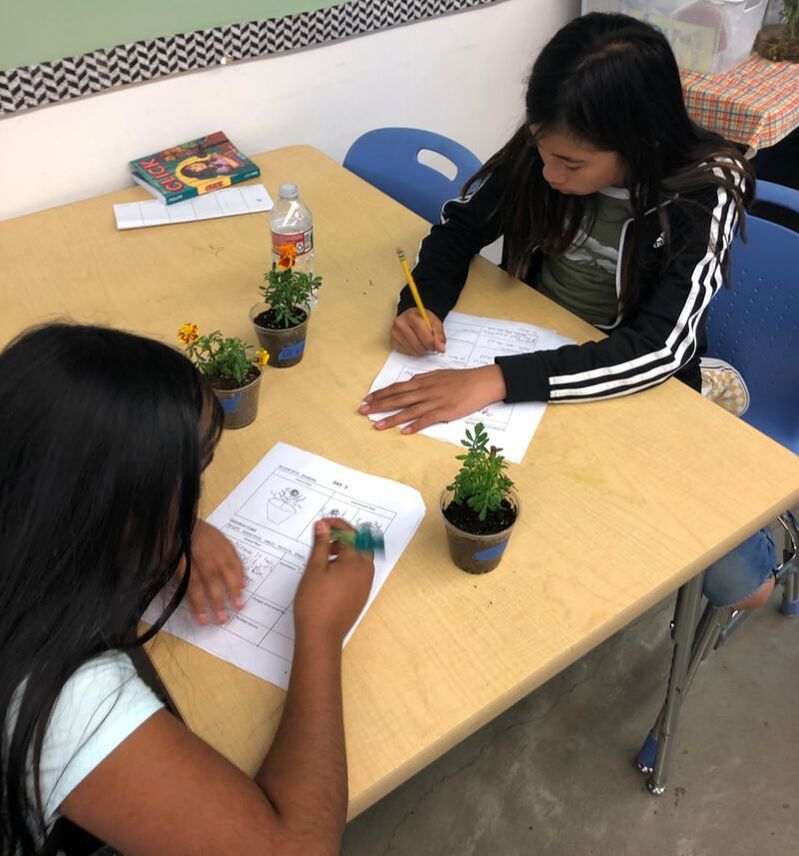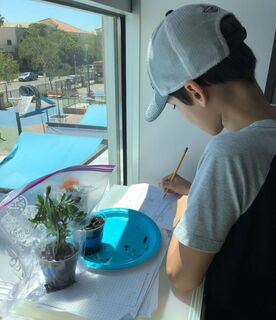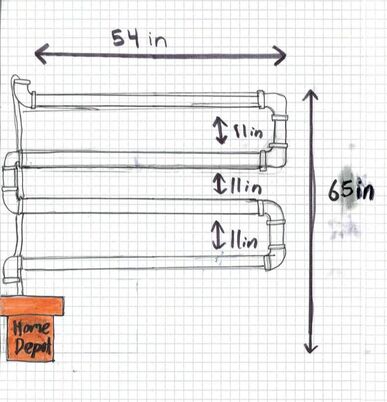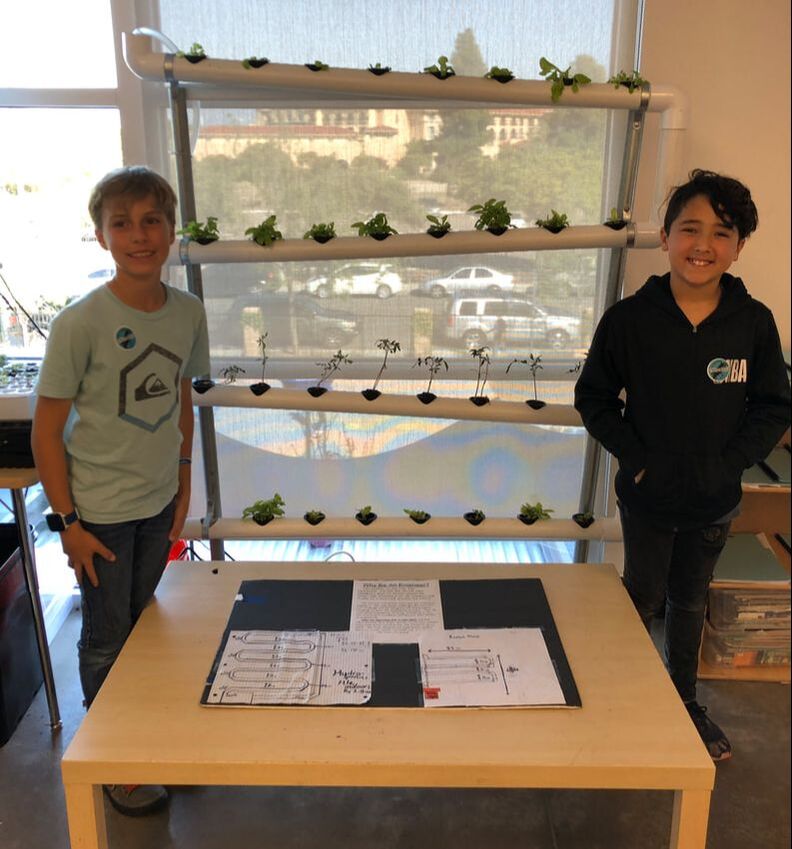Math and science integration
This project created ample opportunities for rich, authentic STEM work. In math, students engaged with measures of central tendency (mean, median, mode) for their egg drop challenge, tested algebraic equations for their hydroponic designs, and interpreted charts and graphs in their research. Students grew as scientists by learning about biology, energy flow through ecosystems, and doing a two-week long science experiment with plants. Throughout the project, they also explored the ins and outs of engineering.
"what do plants need?" |
In this portion of the project, students completed a two-week long experiment. They learned key vocabulary for scientific research, and used their knowledge of the scientific method to study plants' needs. Each group of students selected one variable- air, water, sunlight, and soil- to see what happens when a plant does not have that need met. Each group tracked the growth and health of two marigold plants over two weeks. They observed one control plant with all needs met, and one experimental plant.
At the end of the experiment, students drew conclusions about their learning. We used our conclusions and analysis from the experiment to inform the placement and design of our hydroponic systems. Lessons learned from this experiment made us better gardeners, and helped us feel ready to grow our own seeds into the fruits and veggies that now populate our hydroponic systems. To the left, you can see several pages from one student's experiment packet as well as images of students working with their plants. |
hydroponics algebra |
Fifth graders designed and built hydroponics gardening systems for HTe. To make this vision a reality, we had to do a lot of math, measuring, and planning. We found several places at our school that could house the systems, and measured them carefully. After measuring, we came up with an algebraic equation that would help us maximize the space. We had to determine how many rows of plants could fit in each space, leaving room for plants to grow big and strong.
After completing our hydroponic algebra, we sketched plans for the gardening systems. These went through several rounds of critique before being finalized. Our finalized plans were the blueprints used to construct our hydroponic systems. Check out some of our beautiful plans, as well as one of our finished systems! |



